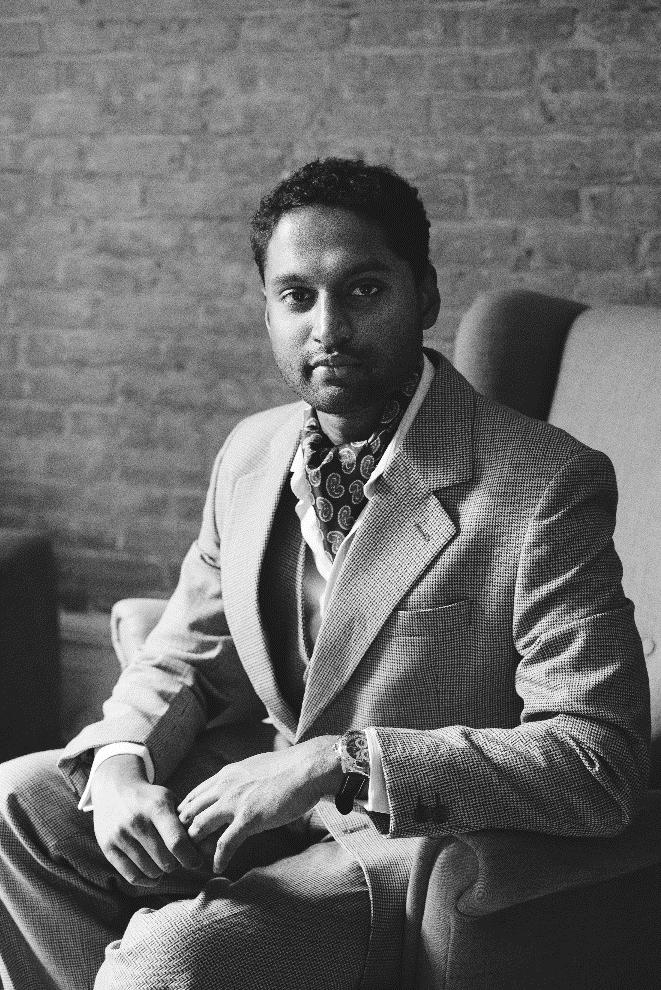"These are deeply troubled times,” writes Rabbi Jonathan Sacks in Not in God’s Name: Confronting Religious Violence, after he lists the sad state of religiously motivated violence and hatred in our already aged young century. One can almost hear the sigh escape as the words form under the toil of his hands. The Jewish paean to pluralism has always had an urgency to it, likely because, outside of the modern State of Israel, Jews have been minorities susceptible to the whims of gentile overlords and neighbours. While one viscerally feels this urgency in Rabbi Sacks’ latest book, hope abounds as well.
Rabbi Sacks is hardly a stranger to confronting public issues; it’s hard to think of a more prolific and public religious figure in the past two decades. While he served as Chief Rabbi of the United Hebrew Congregations of the Commonwealth, he penned The Dignity of Difference: How to Avoid the Clash of Civilizations in the wake of 9/11. His current work delves further. It does not simply make a case for allowing and respecting difference. Rather, it is a challenge: a challenge to adherents of Abrahamic monotheisms (one always needs to remember there are other monotheisms: Parsees, Sikhs, and Bahá’ís come to mind) to find religious reasons to embrace rather than exclude the other. This task is doubly hard in a secular public square that is swift to see violence as the natural wellspring of a poisoned font; that of rigid, religious dogma that cannot but clash with unbelief.
For Rabbi Sacks, Abraham – the patriarch to whom over half of humanity in the form of Christians, Muslims and Jews claim lineage – holds the key to recovering fraternal peace. The “simplest definition of the Abrahamic faith” is proclaimed “to be a blessing to the world.” Not in God’s Name can be seen as a triptych to advance this claim: first outlining the problem of “bad faith,” followed by a rigorous rereading of primary texts, and finally charting a way forward. While the effort does not always find its mark, it is tenacious in its grappling with the subject.
Rabbi Sacks dispels the notion quite early on that he is a blithe peacenik with his forceful condemnations of crimes done under the banner of God: “Nothing could be more alien to the spirit of Abrahamic monotheism than what is happening today in the name of jihad,” he writes. As Rabbi Sacks categorically calls the affliction of the Christians of the Middle East “the religious equivalent of ethnic cleansing” and “one of the crimes against humanity of our time,” he is displaying a courage that very few political leaders have. He emphasizes that the “use of religion for political ends is not righteousness but idolatry.” And he adds, “The greatest threat to freedom in the post-modern world is radical, politicized religion.”
Increasingly, many well-meaning secular people find it difficult to fathom the depths to which religious faith has a hold on the majority of human beings, those living and those already passed through this vale of tears. Assuming their (post-Christian) perception to be the norm, the befuddled quest to find any reason but religion bespeaks an obtuseness that is a failure of the imagination. Sam Harris, in his remarkable dialogue with Maajid Nawaz as recorded in Islam and the Future of Tolerance, states that through the exonerating gyrations of these mental gymnastics, “it would be impossible for a jihadist to prove that he was doing anything for religious reasons.”
The medicine, rather, for the ailment cannot be a secular one but must be theological. This is especially true, according to Rabbi Sacks, as it is increasingly evident that our century will be a religious one, because faith is better able to take advantage of global communications and satiates the ineradicable human hunger for meaning and, perhaps most importantly, because religious communities tend to have more children than their secular counterparts. In this religious context, it becomes pertinent that we do not shirk from facing religious problems from a religious perspective. Rabbi Sacks warns: “If we do not do the theological work, we will face a continuation of the terror that has marked our century thus far, for it has no other natural end.”
This “theological work” of course, is textual. As we approach the 500th anniversary of the Reformation in late 2017, savagery due to the interpretation of religious texts is one that is a deeply entrenched part of Western history. It bears revisiting, particularly as Rabbi Sacks alludes to it by pointing out that there “are striking parallels between then [the religious wars in the 16th and 17th centuries following the Reformation] and today.”
James Simpson of Harvard, in his remarkable study Burning to Read: English Fundamentalism and Its Reformation Opponents, points out the logic of freelance authority made possible by a literalism anchored on supposed textual clarity:
“Scripture could only provide an unbreakable plank of authority on which to stand against the Church if Scripture was absolutely clear and explicit. Not only did truth have to be located in Scripture, but that scriptural truth had to be incontrovertible. Nonscriptural claims to truth had to be rejected, and the entire machine of academic [and clerical] scriptural reading had to be disabled in favour of a Scripture so limpid that it interpreted itself.” (emphasis added)
John A. Azumah, writing in First Things, pointed out that the “vast majority of Christians and Muslims don’t live by sola scriptura, or by Quran and Sunna alone – and this is the case even when they claim to do so.” Evidence comes in the delightfully irreverent memoir by A.J. Jacobs, The Year of Living Biblically, which attempted to do just that.
Rabbi Sacks details a key development within Judaism as proving crucial to how texts could be interpreted sanguinely. For as Philip Jenkins detailed in Laying Down the Sword, there are violent verses in both the Hebrew Bible and the Christian New Testament that need to be dealt with. The rejection of literalism is seen as the first major proposition of Rabbinic Judaism, which declared Biblicism – accepting the authority of the written word while rejecting oral tradition, the position of the Sadducees and Karaites – as heresy. The rabbis said, “One who translates a verse literally is a liar.” The point is clear: no text without interpretation; no interpretation without tradition.
This point is echoed succinctly by Maajid Nawaz in Islam and the Future of Tolerance when he says, “Scripture exists; human beings interpret it.” Nawaz further points out that “in Muslim history, there have been people, known as the Mu’tazila, who didn’t insist that the Quran was the eternal word of God… [but] the Mu’tazila were eventually defeated by the Asha’ira, led by Imam Ash’ari, whose views on the eternal, uncreated nature of the Quran then became accepted as orthodoxy.”
There is indeed a thrill in autonomously interpreting an unadulterated literal text without any intermediaries. Paul Berman writes in Tablet magazine about the titillation of the radical recruit who “…will arrive at the policies [of the Islamic State] almost with pleasure, enjoying his own ability to match real-world issues of the present moment with the textual sources from ancient times. He will feel for a moment that he, too, is an Islamic scholar – will feel that, in matching the modern world to select passages from the sacred writings, he has just performed the greatest intellectual feat of his life.”
This is what we are facing. This is what enables many self-declared Holy Warriors and religious scholars to commit atrocity and believe that they are doing God’s work. Rabbi Sacks mentions that they are those who commit “altruistic evil.”
Having laid out the possibility of alternative readings through interpretations and the necessity of better, closer readings, Rabbi Sacks sets out to do just that. The heart of Not in God’s Name – and its strongest section – concerns itself with a reinterpretation of the story of Isaac and Ishmael, Jacob and Esau, and finally Joseph and his brothers. In doing so, Rabbi Sacks performs a feat of pastoral illumination that is a proactive kneading into the “afterlife” of the text, to use Walter Benjamin’s phrase.
In this Sacksian reading, the scapegoat theory of violence promulgated by the French thinker René Girard finds redemption. This redemption is reached not through the Crucifixion of Christ, as in Girard’s original formulation, but by answering the question “Why does God choose?”
For Rabbi Sacks, divine election and love “is governed by the principle of plenitude.” This means that, ultimately, “God rejects rejection.” One notable portion is Rabbi Sacks’ highlighting of the part of the Midrash where Ishmael, even before the advent of Islam, is never viewed as “a rejected figure in Judaism.” The blessings of God can be a “both/and” proposition. Readers would be amply rewarded by studying this section for themselves. The Christian corollary to this idea is found in Jesus’ Parable of the Prodigal Son, where the father states to his resentful older child: “Son, you are always with me, and all that is mine is yours. It was fitting to make merry and be glad, for your brother was dead, and is alive; he was lost and is found” (Luke 15:31-2).
Yet some gaps remain in Rabbi Sacks’ analysis.
First, Rabbi Sacks does not directly address the question of authority in interpretation. It is implicit that what he himself is doing is due to his fidelity to his tradition, and thus the texts associated with that tradition. But he does not directly address why a fellow Jew may not reject his interpretation. Is the only thing compelling assent superior study? Is it knowledge of religious texts, coupled with clerical credentialing, that bestows authority? For instance, in Catholic Christianity, it is understood that the task of giving an authentic interpretation of the word of God, whether in its written form or in the form of tradition, has been entrusted to the living teaching office of the Church alone. Its authority in this matter is exercised in the name of Jesus Christ. This magisterium is not superior to the word of God, but is rather its servant. No less attention must be devoted to the content and unity of the whole of scripture, taking into account the tradition of the entire Church and the analogy of faith (Dei Verbum – Dogmatic Constitution on Divine Revelation).
It would be interesting to hear Rabbi Sacks’ position not simply on why some interpretations are better but on what and whose authority they are made.
There is also a claim made by Rabbi Sacks that is self-contradicting in parts, and unconvincing when the sum of his case is considered. It is his assertion that the Jews discovered since the destruction of the Second Temple that “religion acquires influence when it relinquishes power.” It is hardly evident that this is the case at all. Toward the end of the book, Rabbi Sacks mentions the State of Israel is “the only thing protecting Jews from being the scapegoat-victims of the world for another thousand years.” Israel could hardly exist without exercising political power.
When Rabbi Sacks cites Bernard Lewis arguing that “historically Islam had contempt for Jews but not hate,” there is no consideration of the fact that Jews never exercised power in a meaningful sense with respect to Muslims; and had this been the case at an earlier historical epoch, perhaps things would have been different. Moreover, as Eric Hoffer reminds us in The True Believer, “There is hardly an example of a mass movement achieving vast proportions and a durable organization solely by persuasion.” Hoffer adds, “where a mass movement can either persuade or coerce, it usually chooses the latter.” In Sikhism, for example, this lesson was learned the hard way when Guru Arjan and Guru Tegh Bahadur, the fifth and ninth of the 10 Sikh prophets, were tortured and executed by the colonizing Mughal Muslims in the 17th century for refusing to convert to Islam. These experiences of impotence led to the notion of a Sant-Sip?h?, or saint-soldier; for freedom of religion as a minority cannot be guaranteed without political self-possession.
In the trinity of Abrahamic monotheisms, the conceptual distance between the three faiths are not equidistant vis-à-vis each other. At the surface, Islam and Judaism seem straightforward monotheisms with ritual and obligation compared to a seemingly antinomian Christianity. As George Weigel notes, “Islam is ‘other’ in relationship to Christianity and Judaism in a way that Christianity and Judaism cannot be to one another.” Rabbi Sacks notes, with an admirable fluency in Christian thought, that the continuity of the Hebrew Bible with the Christian New Testament was affirmed through the rejection of the Marcionite heresy, thus affirming that “the God of the Old Testament and the God of the New are the same God.” There is not the same relationship with the Quran, though it confirms, in principle, the Torah and the Gospel.
Yet there is hope. The recent Marrakesh Declaration stated the need for Muslims to “go beyond mutual tolerance and respect to providing full protection for the rights and liberties to all religious groups in a civilized manner that eschews coercion, bias and arrogance.” Then there is the document promulgated by the Vatican in December 2015, The Gifts and Callings of God Are Irrevocable, on Jewish-Christian relations that may be the most profound interfaith statement yet issued.
The Trinitarian sibling rivalry and relationship is probably more apt with Hinduism, Jainism and Buddhism in South India at the turn of the first millennium. Wendy Doniger notes that the Hindu Periya Puranam (Great Epic) recounts the murder of Jains, and there is textual evidence that several Hindu kings, namely Mihirakula and Sasanka both murdered Buddhist monks and destroyed monasteries.
In public discourse, the penchant is for a political solution, coupled with military action from the skies, to face down the peril of religious violence. These are quick fixes, as Rabbi Sacks reminds us, insufficient to the mighty task ahead. It is merely a conservative estimate that the struggle for a peaceable plurality is the work of at least two or three generations. The reality of human freedom means that the erosion of hatred with the simultaneous shoring up of trust and fraternity will be a long, hard and decisive struggle. The only way out is through. A sobering reminder of the seriousness of the choice facing us can be summed up in these words toward the end of Not in God’s Name: “The West, indeed the world, has never faced a challenge quite like this… If we fail to address the issue seriously now, this will be our future. It is not one any of us should wish to bequeath to our grandchildren.”






